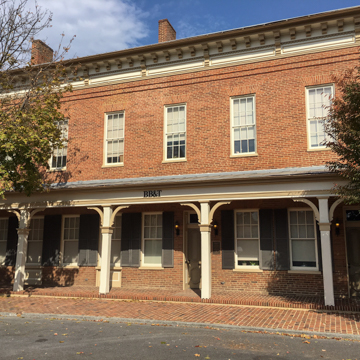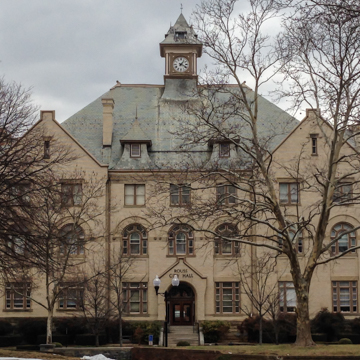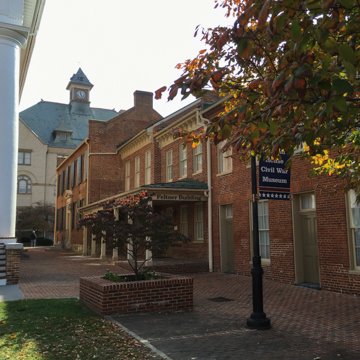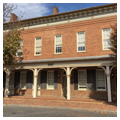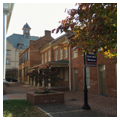North of the Old Frederick County Courthouse (FR1) is a row of buildings known as Huff's Row (1850; 14–20 Rouss) and Lawyers' Row (1872; 30–38 Rouss). These two-story brick buildings housed law offices, as was typical near courthouses. Only 18 Rouss Avenue retains its original second-story porch with Doric columns. The Italianate Lawyers' Row has a bracketed cornice, paneled frieze, and three double-parapeted chimneys.
East of the courthouse Rouss City Hall (1900; 15 N. Cameron), designed by Frank H. Jackson of Washington, D.C., is named for local businessman and donor Charles Broadway Rouss. The three-and-a-half-story yellow brick building is mildly Romanesque Revival in style and features a hipped slate roof with an imposing central clock tower. South of the courthouse, the former Frederick County Clerk's Office (1832; 23 Court Square) is a two-story Federal brick building featuring a gable roof with raking parapets, unusually wide eight-over-eight sash windows, and a particularly fine pedimented entrance that contains a lunette with delicate tracery. At 9 Court Square (c. 1850), a group of brick buildings forms a major focal point of the courthouse complex that concludes with the three-story building facing N. Loudoun Street.







